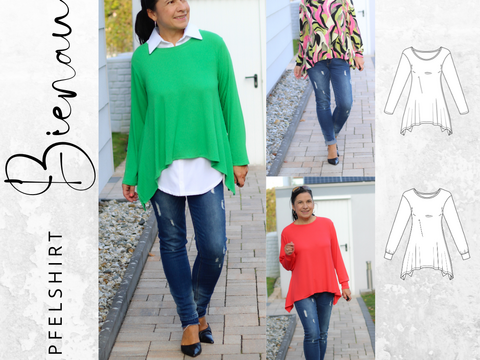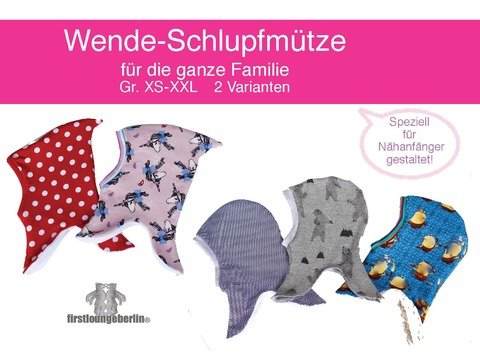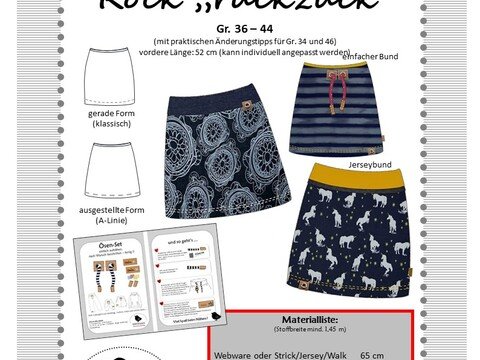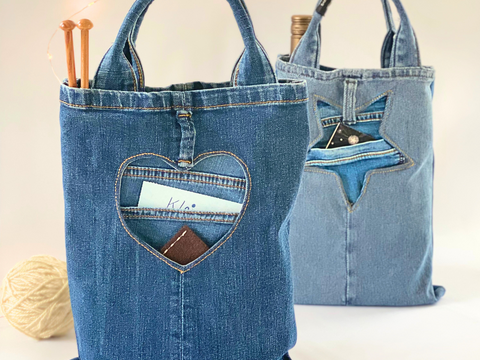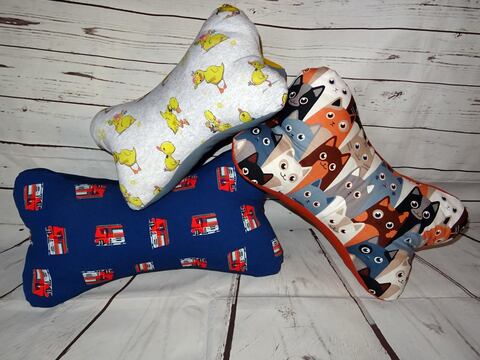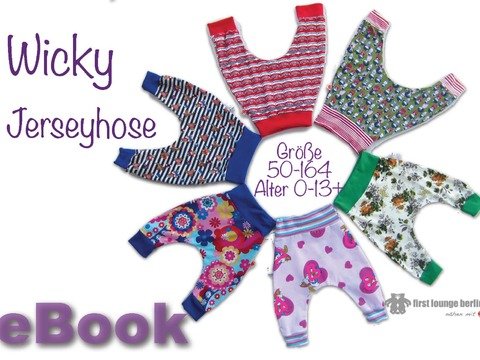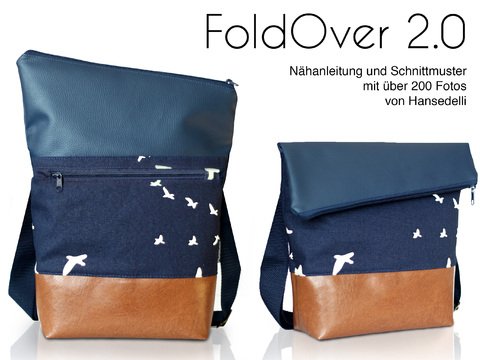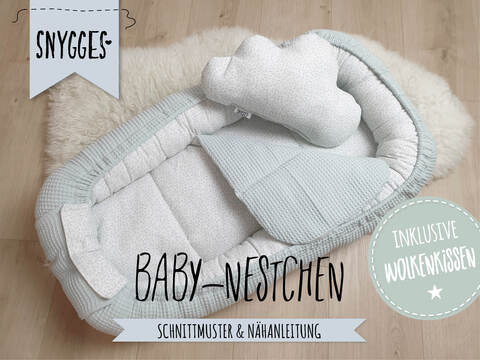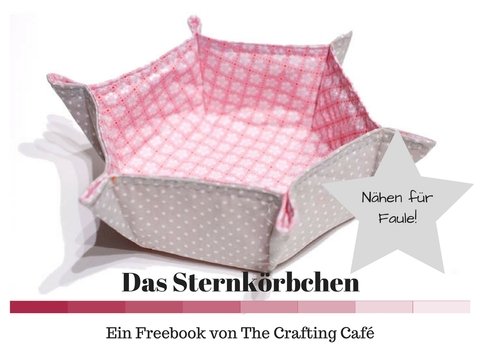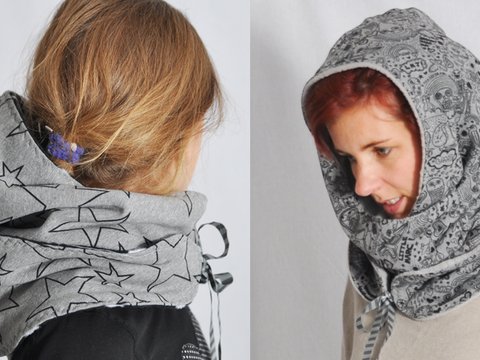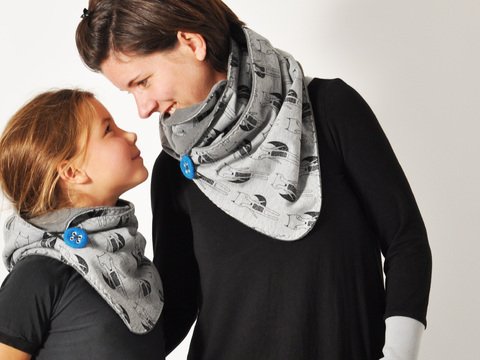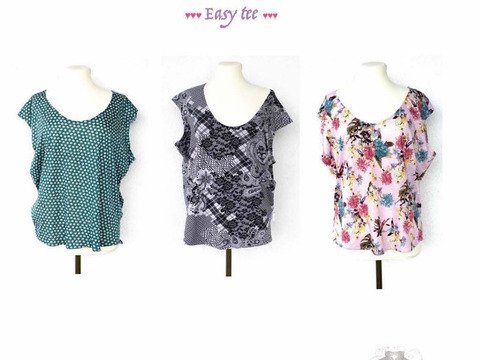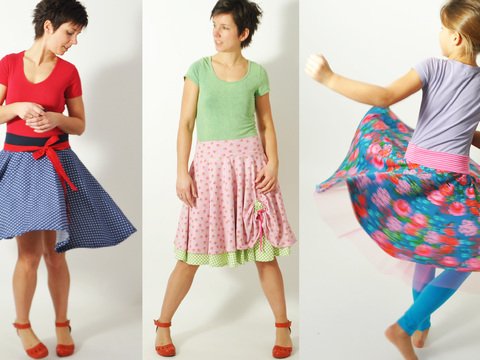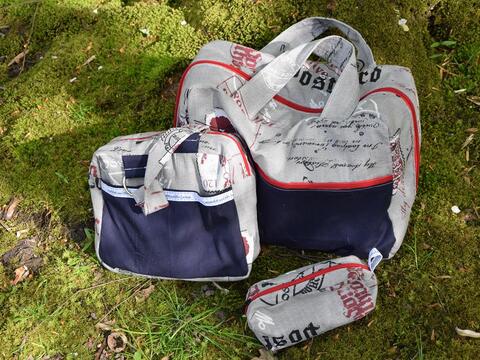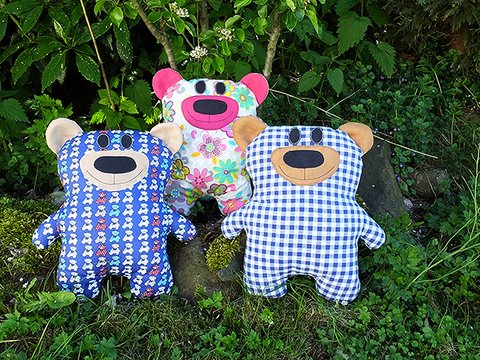This blog post is about the resource-saving use of our fabrics and the optimal use of fabric scraps.
My passion is patchwork & quilting, a hobby in which, depending on the pattern, pieces of fabric of different sizes are cut.
The reasons for saving resources are as individual and various as patchwork & quilting itself:
• We are thinking more and more about how we can conserve the world's resources.
• But even in our own small area of life, the resources are known to be limited...
• We want to make the best use of a beautiful fabric and waste as few as possible.
• We want to use the remaining fabrics sensibly and optimally.
It doesn't always have to be bought new fabric...
Maybe you are looking for an alternative to new cotton fabrics?
Even if patchwork was already known to the ancient Egyptians, it is mostly the American settler women who we think of if we see a patchwork blanket (quilt).
These settler women often used old, discarded clothing and used it to sew warm blankets for their families.
I also see patchwork blankets (quilts) here from time to time, but also placemats sewn from old cotton clothing. Men's shirts in particular are popular for this.
Why don't we resurrect this kind of upcycling?
The main thing is that it's cotton that doesn't stretch... (no T-shirts or similar).
But enough about the fabrics that can be used and the various options, let's get to the cut!
Templates to plan the fabric requirements
In the following step-by-step instructions I will show you how to use the fabric optimally.
Cut out templates from paper or heavier paper/cardboard in exactly the sizes you need for the respective fabric.
For this it makes most sense if the templates are already drawn including the seam allowance. In my instructions, the sizes of the fabric elements are already given, including the seam allowance.
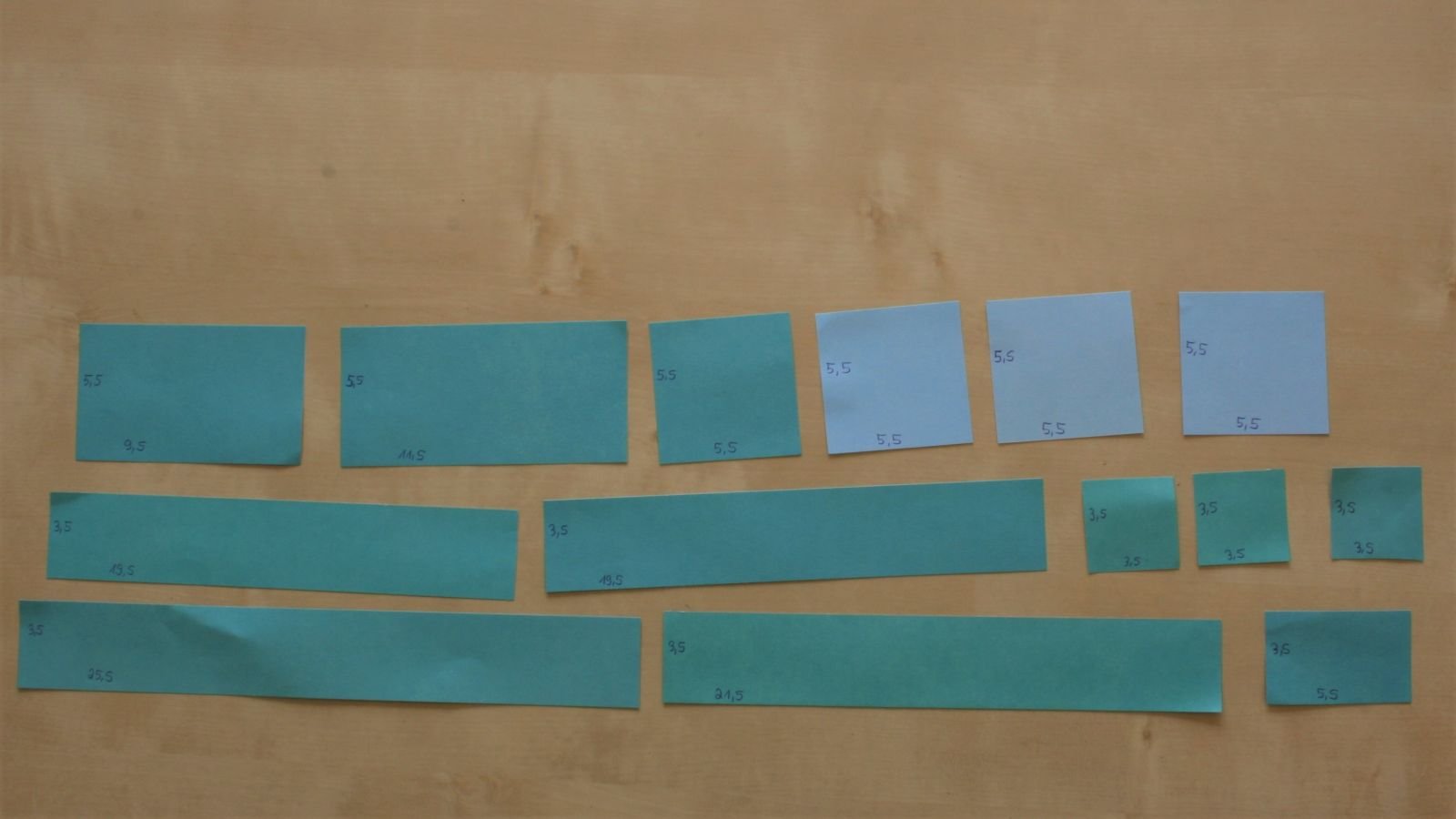
I cut out the templates for all the elements I need for the background of my latest “Pumpkin Potholder Quilt 1” pattern from colored paper. (I will publish this tutorial soon.)
Now you can sort these templates back and forth to see how you can arrange them in the most resource-efficient way.
You can sort the templates on a cutting mat so that you know exactly how much fabric you need. Because of the scale on the cutting mat, you can calculate better.
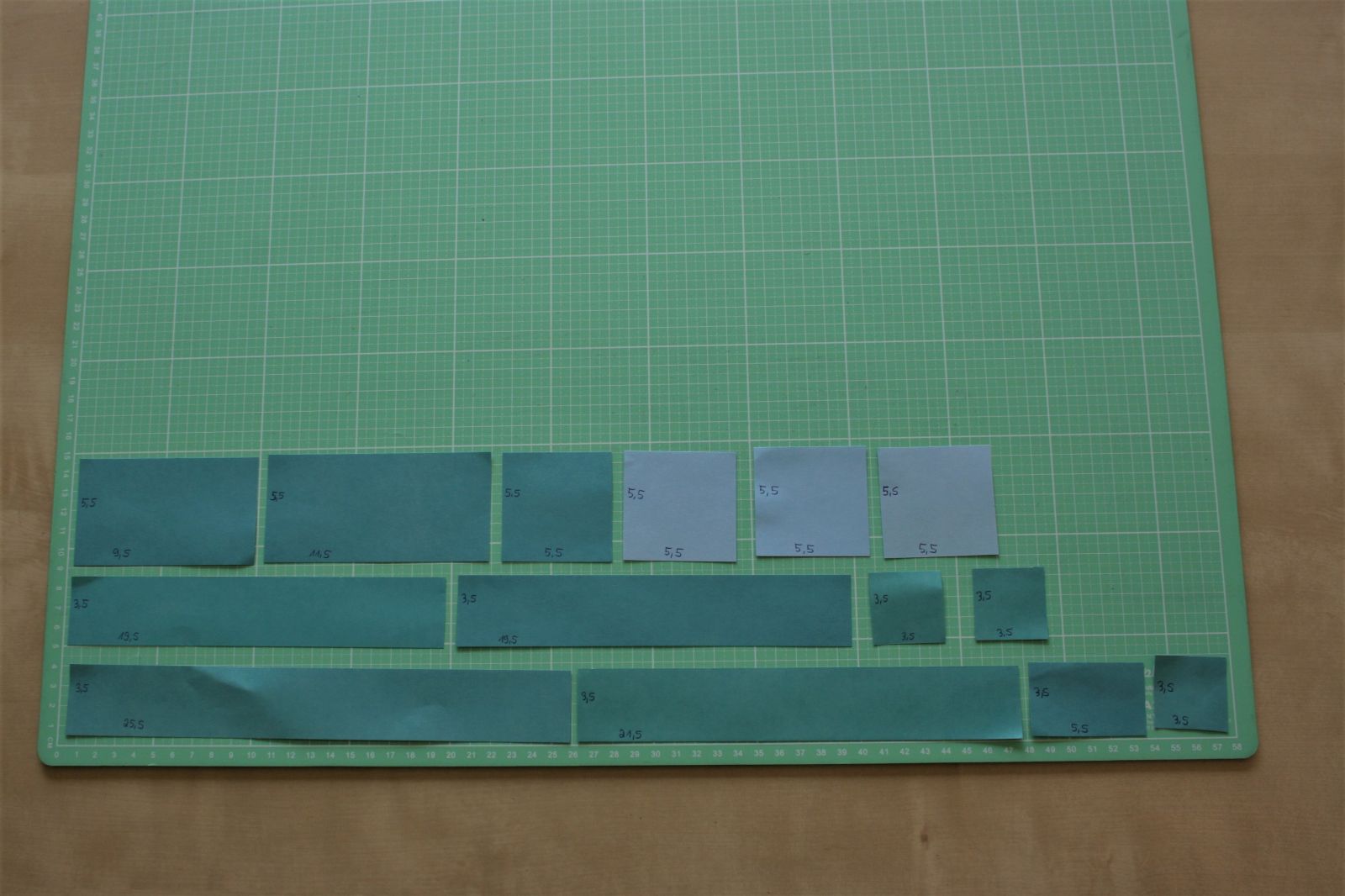
When you have created your optimal arrangement, it is best to take several photos (overall and close-ups) so that you can recreate this arrangement later.
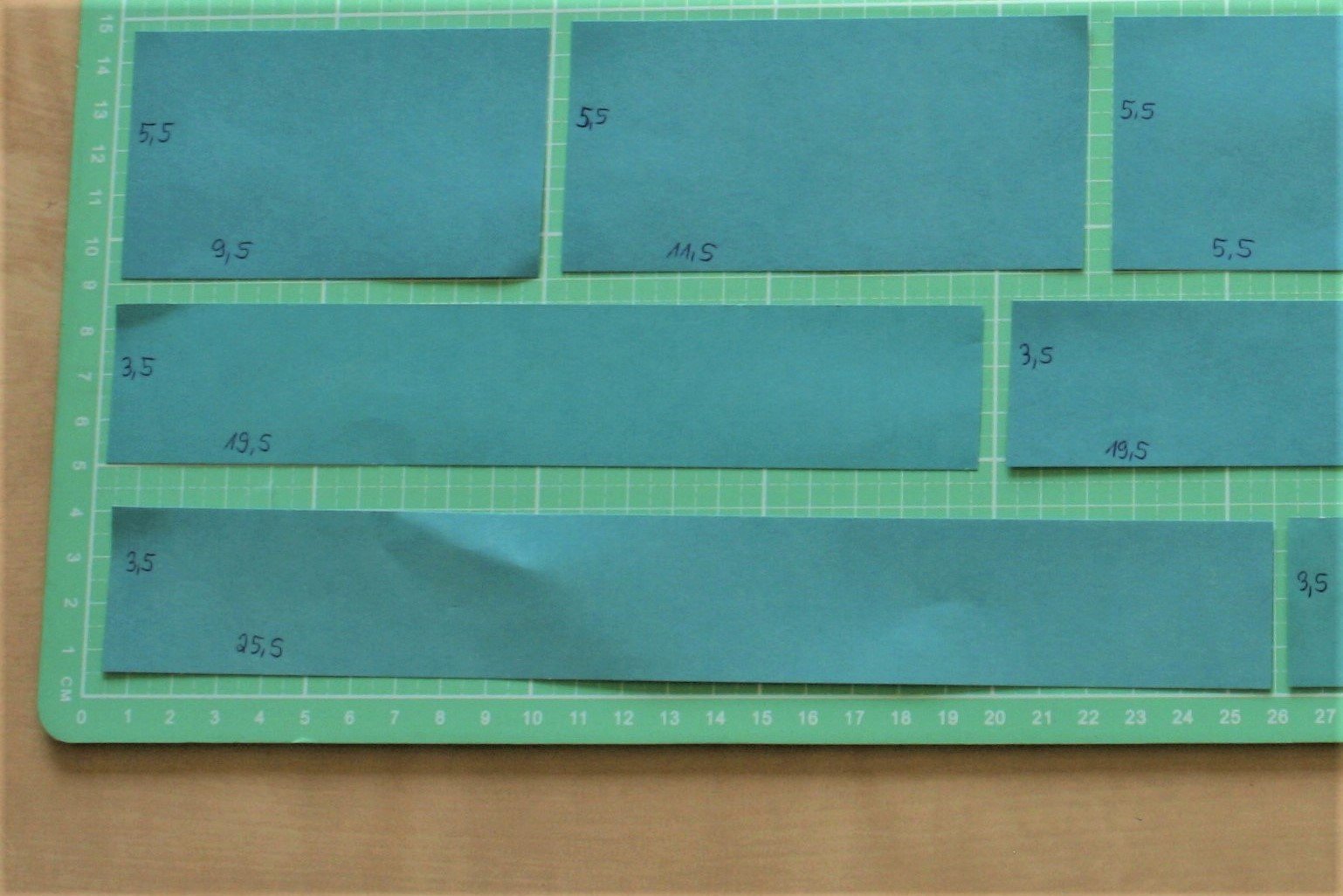
It often happened to me in the past that I thought "The arrangement is simple, I can remember it". But then I didn‘t remember every detail any longer. 😉
If you want to cut the fabric pieces from fabric strips, first measure the length of the fabric strips. Then sort the templates so that you need as little fabric height as possible and can use the length of the strip well.

An (American) patchwork fabric is often 110cm wide, a German cotton fabric is often 140cm wide. These are the measurements BEFORE washing. Since the fabric may shrink by 5-10% according to the manufacturer, it is useful to measure the pre-washed fabric. 😉
I took a scrap of fabric and laid out the templates according to the length of my fabric.
If you prefer to work without stripes, but want to cut the fabric "piece by piece", then you can sort the templates differently.

If you want to use leftovers, iron the leftovers down and sort the templates so that you use the leftovers efficiently.
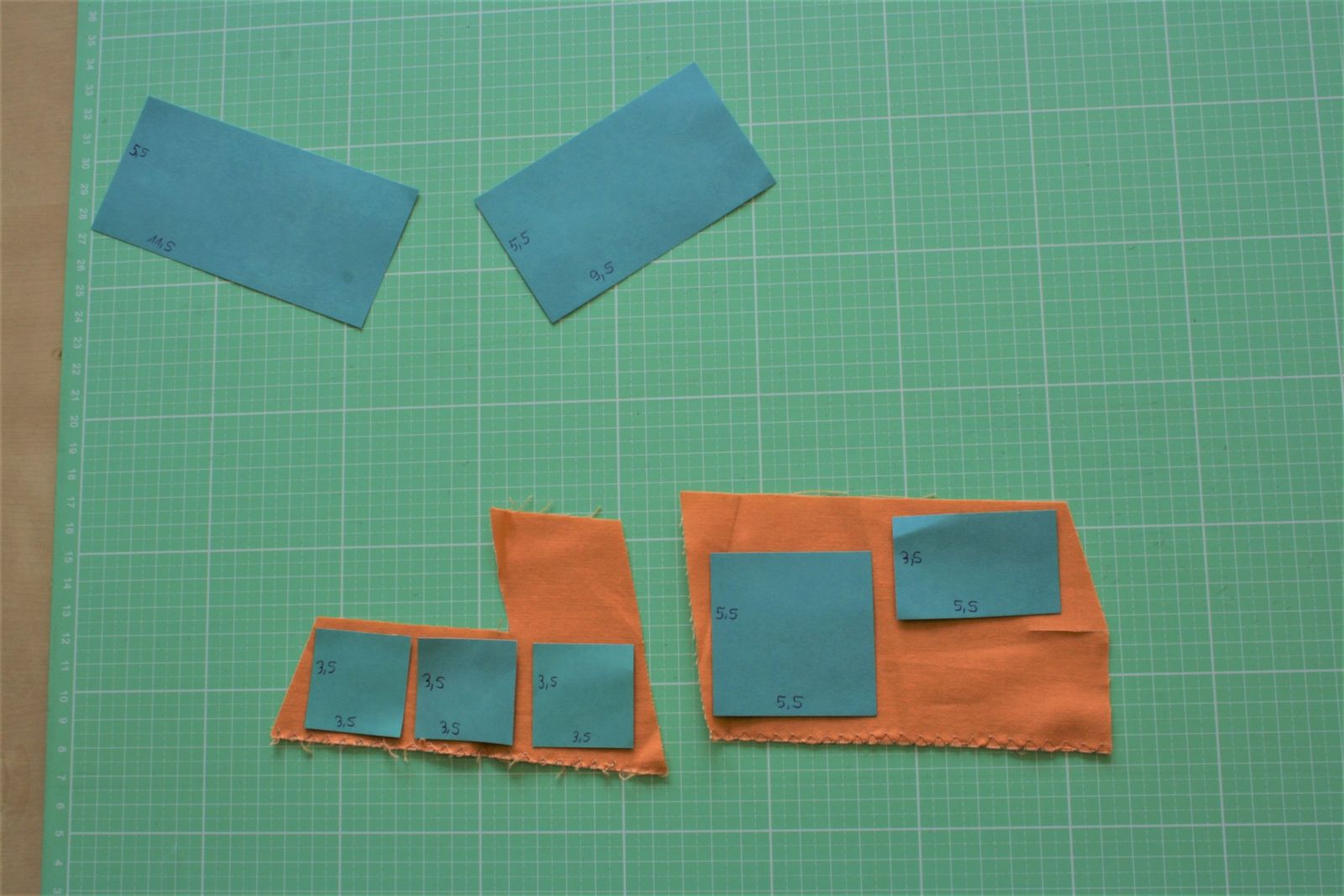
Because especially in patchwork you can use even the smallest cotton scrap.
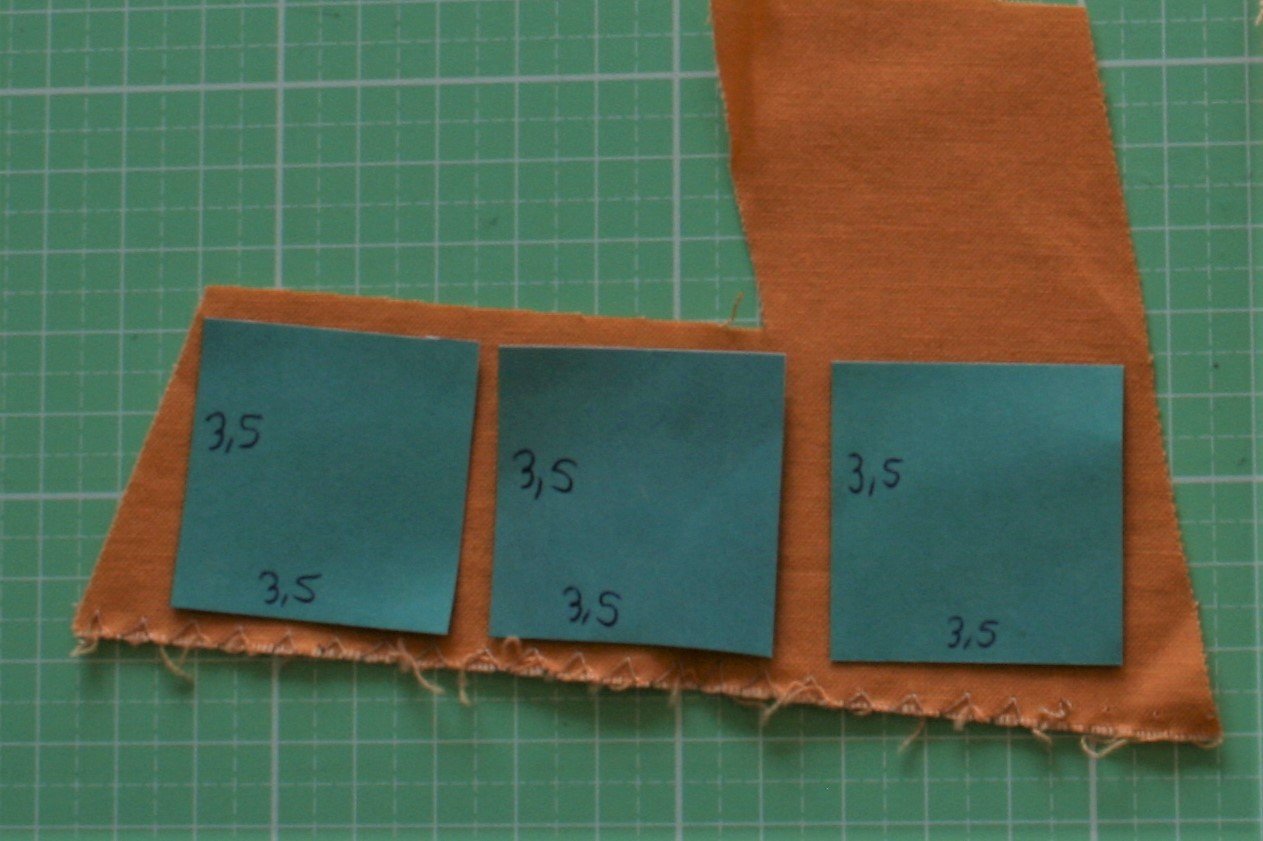
A big advantage of my instructions is that the required fabric elements are given including the seam allowance.
The further process of cutting the fabric pieces depends on whether you are working with a cutting mat, rotary cutter and a ruler suitable for the rotary cutter, or whether you prefer to cut the fabric with scissors.
How to cut with scissors
You trace the edge of the template with a soft pencil on the wrong (not pretty) side of the fabric.
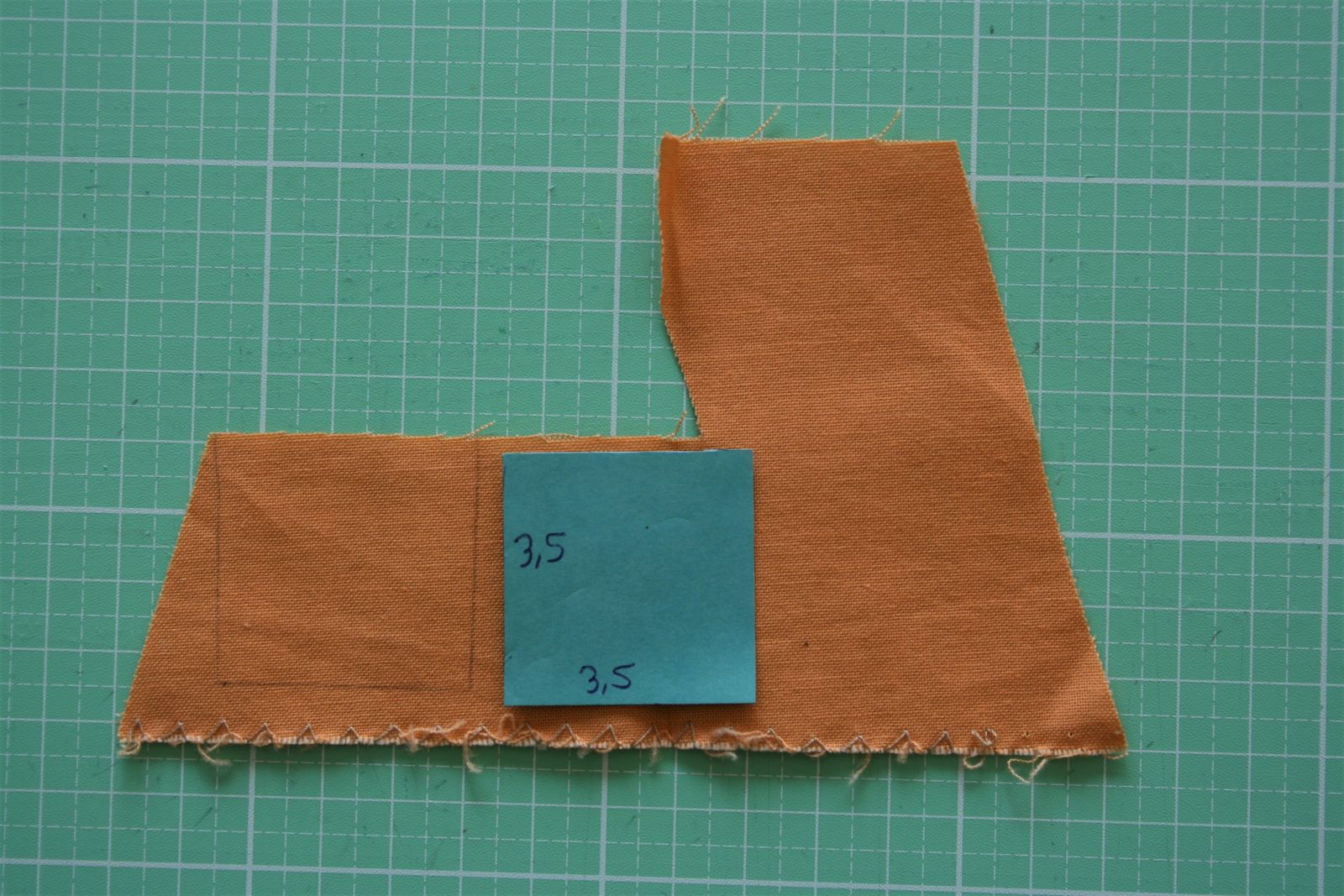
Then cut out the fabric along the pencil line you drew. That’s it!
How to cut with a rotary cutter
If you're using a rotary cutter, place the fabric wrong side (ugly side) up on the cutting mat.
1st alternative:
• You have seen from the photos that you can use fabric strips with a height of X cm.
• Then you cut the strips of fabric to the appropriate height.
• Now place the ruler against the strips and cut off the required widths for the fabric elements.
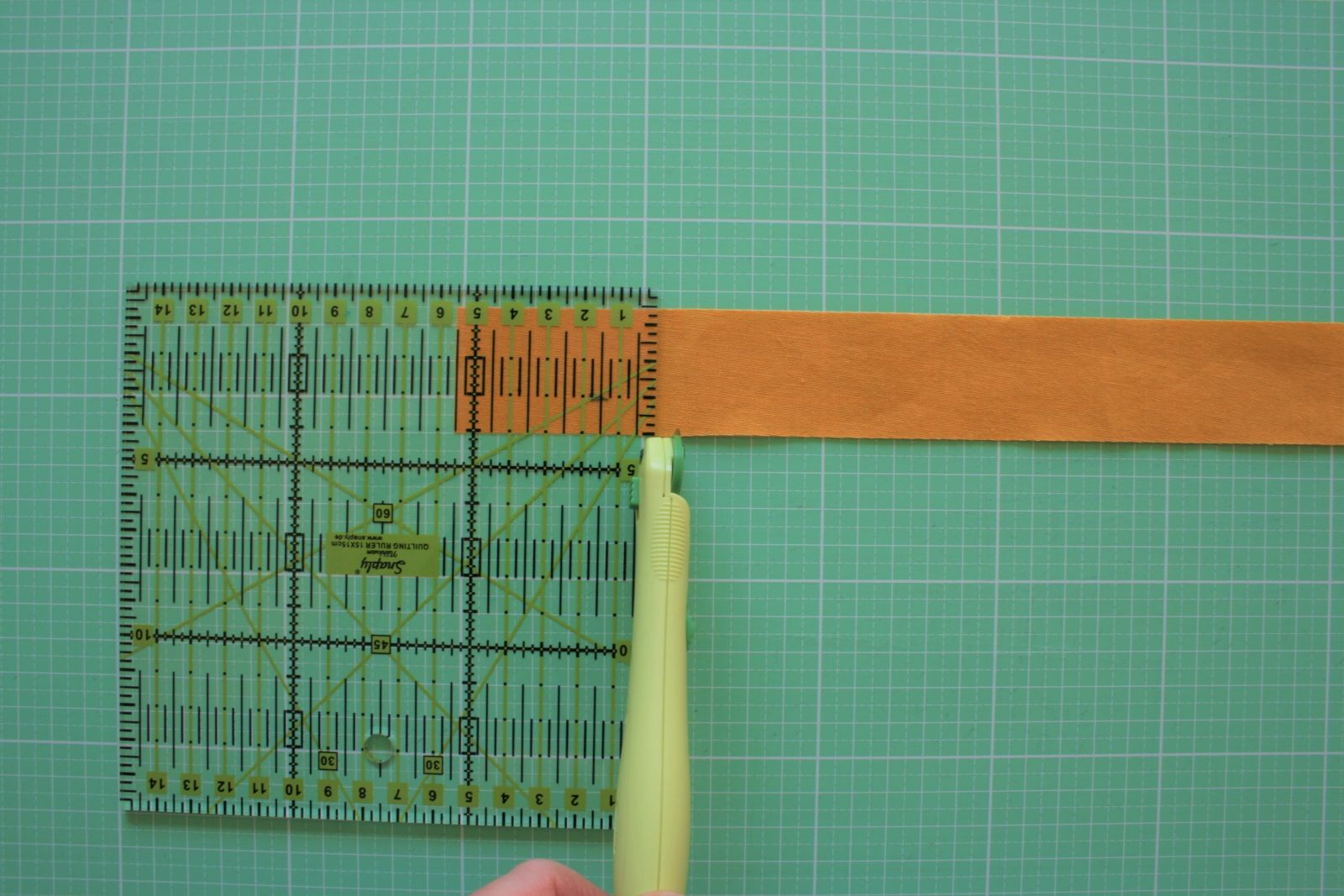
2nd alternative:
• You place the templates on the fabric in the arrangement that suits you best. You may see the photos to remember the details.
• Trace the edges with a soft pencil.
• Put the templates away and • use a ruler that is suitable for a rotary cutter to cut the fabric along the lines.
.jpg)
Which variant you choose depends on your personal preferences and your experience in cutting the fabric.
Use a rotary cutter instead of scissors
Maybe you've never worked with a rotary cutter and would like to try it?
Personally, when I first used the rotary cutter, I had a great deal of respect for the rotary cutter, because I knew from reports that the rotary cutter could easily cut through to the bone in the event of an accident.
The respect for the sharpness of the rotary cutter has remained to this day and when I use it, I am 100% focused and do not let anything distract me.
A rotary cutter works for both left-handed and right-handed people
At first glance, a rotary cutter looks like a pizza cutter, except that the rotary cutter is extremely, really extremely sharp. There are rotary cutters that are suitable for right-handed and left-handed people as they are and some that can be easily converted for right-handed or left-handed people.
As a left-hander, I have of course tried many, the rotary cutters for right- and left-handers actually work for left-handers too. 😉 I own several rotary cutters of both variants, with which I get along well.
Try out a few at your fabric store, a rotary cutter has to feel good in your hand and be your favorite in terms of handling.
A rotary cutter is available in different sizes
I always have several rotary cutters in use, because nothing annoys me more than having to interrupt the cutting of the pieces of fabric (patches) to change a blade because it is blunt.
Most of the time I use a rotary cutter with a 45 mm diameter blade. There are also 60mm diameter rotary cutters which I find particularly useful when I want to cut 4 or 6 layers of fabric on top of each other.
The 18 mm rotary cutter is easy to hold for cutting curved pieces of fabric. Okay, the curvy parts may not be relevant to you right now, but maybe in a few months or years...
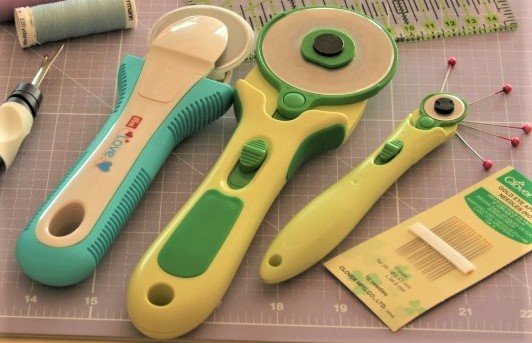
A rotary cutter has the advantage that you can cut directly along the patchwork ruler or stencils (these are extra thick patchwork stencils and rulers that are expressly intended for the rotary cutter).
You can even double the fabric or fold it in four and the rotary cutter will cut through all layers of fabric with its very sharp blade.
If you need the same pieces of fabric 40 times, this property is worth its weight in gold...
My tips for using the rotary cutter
• Please always be very careful when working with the rotary cutter! It is really extremely sharp and unfortunately you can hurt yourself very badly.
• Therefore please always close the rotary cutter as soon as you are finished. It is better to open and close the rotary cutter 20 times than to injure yourself.
• The blade of the rotary cutter dulls over time, in fact it is a consumable item. 😉 On the one hand, a dull blade increases the risk of injury and, on the other hand, you need more strength to cut through the layers of fabric.
Over time, this exertion can cause your hand to hurt or your hand to slip. So it's better to change the blade once more than to harm your body.
Use your current rotary cutter for fabric only. I have an discarded rotary cutter that I use for cardboard and paper.
I hope these informations will help you to get the most out of your fabrics!
Happy sewing!
Chris




















